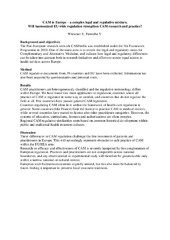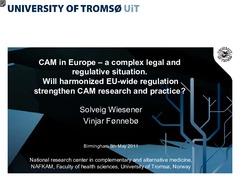| dc.description.abstract | <p><i>Background and objectives</i> The Pan-European research network CAMbrella was established under the 7th Framework Programme in 2010. One of the main aims is to review the legal and regulatory status for Complementary and Alternative Medicine, and indicate how legal and regulatory differences can be taken into account both in research initiatives and efforts to secure equal access to health services across Europe.
<p><i>Method</i> CAM regulative documents from 39 countries and EU have been collected. Information has also been acquired by questionnaires and personal visits.
<p><i>Results</i> CAM practitioners are heterogeneously classified and the regulative terminology differs within Europe. We have found two main approaches to regulation; countries where all practice of CAM is regulated in some way or another, and countries that do not regulate the field at all. Few countries have passed general CAM legislation. Countries regulating CAM often do it within the framework of health care regulation in general. Some countries (like France) limit the licence to practice CAM to medical doctors, while several countries have started to licence also other practitioner categories. However, the systems of education, curriculums, licences and authorizations are often complex. Regional CAM regulative similarities seem based on common historical development within public and traditional health treatment cultures.
<p><i>Discussion</i> These differences in CAM regulation challenge the free movement of patients and practitioners in Europe. This will accordingly represent obstacles to safe practice of CAM within the EU/EEA area. Research on efficacy and effectiveness of CAM is severely hampered by this conglomerate of European regulation. Practices and practitioners are not comparable across national boundaries, and any observational or experimental study will therefore be generalizable only within a narrow national or cultural context. European-wide harmonization seems urgently needed, but this also must be balanced by forces finding it important to preserve local treatment traditions. | en_US |


 English
English norsk
norsk
